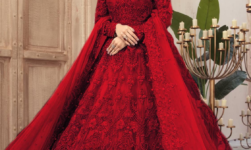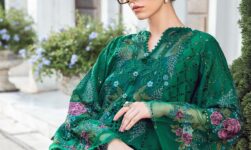Virtual try-on is a technology that enables customers to visualize products on their own bodies before making a purchase. It helps reduce returns and boost customer satisfaction levels.
Digital advertising is becoming an integral component of a brand’s digital marketing strategy. Retailers are using it to boost their sales and conversion rates.
Virtual Try-On Apps
Virtual try-on apps offer customers a chance to try on makeup or clothes before they buy them, as well as increasing interest in your brand and products which could potentially result in increased sales.
Virtual try-on apps can be found in retail stores, online shops and on mobile devices. Some virtual try-on apps are free to use while others require a small monthly subscription fee. Many also enable users to share their virtual look with friends and family through social media networks.
These apps use augmented reality (AR) technology to display products onto images taken from a smartphone camera. They’re especially helpful for shoppers who may feel nervous trying on items in person or who have difficulty judging fit on their own body types.
Some of these apps utilize artificial intelligence (AI) to generate realistic simulations of what an item will look like on a user’s body. They take into account measurements, body shape, skin tone, and other factors to help customers find the optimal fit.
Fashionistas who want to preview makeup looks can use these apps, and consumers who use them for shoes, apparel, jewelry, and accessories as well. Customers select a style and color they like and then try it on at home before making a purchase.
When selecting a virtual try-on app, it’s essential to factor in price, features and support capabilities. The software should be user-friendly with stunning visuals and compatible with various products.
Another issue to watch out for is how well the application handles lighting. This is especially critical in virtual try-on apps that feature shiny objects since they must take into account reflection and the color of light. Otherwise, your model may move or flicker from frame to frame – an issue to consider.
A great virtual try-on app should offer a realistic and intuitive experience that helps customers make purchase decisions quickly. Additionally, it should offer features that enhance the user’s experience while reducing buyer’s remorse, making shopping simpler for both customers and retailers alike.
Virtual-On in Stores
Virtual try-on is an innovative and immersive tool that helps customers locate the right products without ever having to leave their homes. It has proven successful in increasing sales while decreasing returns. Furthermore, it improves customer satisfaction, leading to repeat purchases.
Retailers are increasingly utilizing this technology to help their customers discover new items and find the ideal fit. Virtual try-on apps allow customers to try on clothing and accessories virtually before making a purchase, providing them with an immersive shopping experience that helps them discover exactly what they’re looking for.
Brands like Burberry, Nike, and Walmart have already adopted this technology into their stores. These stores use augmented reality (AR) to give customers the ability to try on clothing items like shoes and jewelry before purchasing them.
Vertebrae recently conducted a survey and discovered that 7 out of 10 shoppers who used virtual try-on software purchased the item they tried on. They appreciated its efficiency in saving time in fitting rooms as well as giving them an accurate representation of how an item will look on their bodies.
Technology can also be an excellent tool to increase brand awareness, especially among millennials. It enables individuals to share pictures of themselves wearing a particular piece with friends and families – an essential step in the purchasing process.
Building relationships with your customers and creating long-term partnerships can be an excellent way to increase profitability. Furthermore, it helps reduce costly returns and enhance brand loyalty, leading to higher profits in the long run.
Technology is being applied to a range of clothing and accessory categories, from eyewear to shoes. This offers customers an efficient and budget-friendly way to get an accurate representation while they shop for their new wardrobe.
Though it may still be too early to incorporate this technology into your marketing plan, it’s worth investigating how augmented reality can assist your business in growing and building new customer relationships. AR is an emerging trend that could prove revolutionary for luxury brands and retailers alike.
Virtual try-ons are an invaluable asset in the luxury marketing arsenal, helping to boost sales, reduce returns and enhance customer satisfaction. They should be part of every luxury marketer’s arsenal.
Virtual Try-On in Online Stores
Virtual try-on in online stores is a feature that enables consumers to preview items before they make a purchase. This technology works best for apparel, footwear, jewelry and accessories since customers often want to see how a product will look on them before committing to an order.
Virtual try-on software can be utilized on websites, in apps or through social media channels. It should provide realistic and personalized representations of products while being user friendly. Furthermore, it should have the capacity to collect data on customer behavior which could help guide recommendations and spur purchases.
Virtual try-on in an online store can enhance customer satisfaction and loyalty, boost sales, reduce returns rates and cut expenses. Furthermore, it increases the likelihood of impulse purchases which in turn generate greater profits for businesses.
It can also be employed to extend the brand’s reach and foster engagement with new customers who may not have access to physical store locations or live in areas without many retail options nearby. Furthermore, it serves as a great opportunity to foster relationships with existing customers who have an excellent impression of the brand and are likely to return for additional purchases in the future.
Virtual try-ons can be an enjoyable and engaging experience for consumers, as they get to try on various styles of clothing or jewelry without having to leave their homes. Furthermore, consumers have the unique opportunity to share their experiences on social media platforms, giving brands an excellent platform to reach their desired audience and boost sales.
Virtual try-on can be configured with multiple variations of a product, making it simpler for customers to pick an aesthetic that meets their needs and looks good on them. These options can be tailored for any brand by a team with expertise.
Wacoal, a bra sizing company, uses virtual try-on technology to scan users’ bodies and provide real-time sizing advice. This makes it easier for women to select bras that will fit perfectly and look fantastic on them.
Virtual-On for Watches
Augmented reality allows watch brands to show customers how a specific watch will appear on them, providing customers with an easy way to preview the product without having to visit a physical store.
As wrist-tracking technology continues to advance, more watch brands are expected to offer virtual try-on experiences. These features will make it simpler for people to determine if a watch fits their wrist perfectly and potentially reduce returns.
Before these watch brands can provide customers with this experience, they must first create 3D models of their watches using a 3D modeling program such as Kivisense.
Kivisense, the leading virtual jewelry try-on solution provider for retailers, provides them with public or private shareable try-on links and QR codes that can be sent to customers in seconds. This solution can be integrated into any retailer’s website, e-commerce platform, or e-shop to enable virtual try-on for any smartphone user and ultimately increase sales and online conversion rates.
Consumers who can try on products before they buy them tend to feel more secure about their purchase. Furthermore, sharing images of the item on social media for feedback can boost online activity and promote brand recognition.
Furthermore, the “touch and feel” factor is a great asset when selling apparel such as watches, earrings, and clothes. It increases consumer assurance about their purchases which helps prevent returns and provides financial security.
It is especially crucial in the luxury market, where customers often require a highly personalized shopping experience. A virtual try-on feature can make this process simpler and more comfortable for luxury shoppers, decreasing stress while increasing sales.
Many top luxury brands, such as Graff and Bvlgari, have begun using AR try-on to help customers visualize a watch in their environment and try different accessories to ensure it looks perfect. With these tools, customers can virtually try on watches with different settings to ensure it fits perfectly.
One recent augmented reality experience to hit the market is Chrono24 Virtual Showroom. This app uses augmented reality and wrist-tracking technology to give people a virtual representation of a watch on their wrist.






